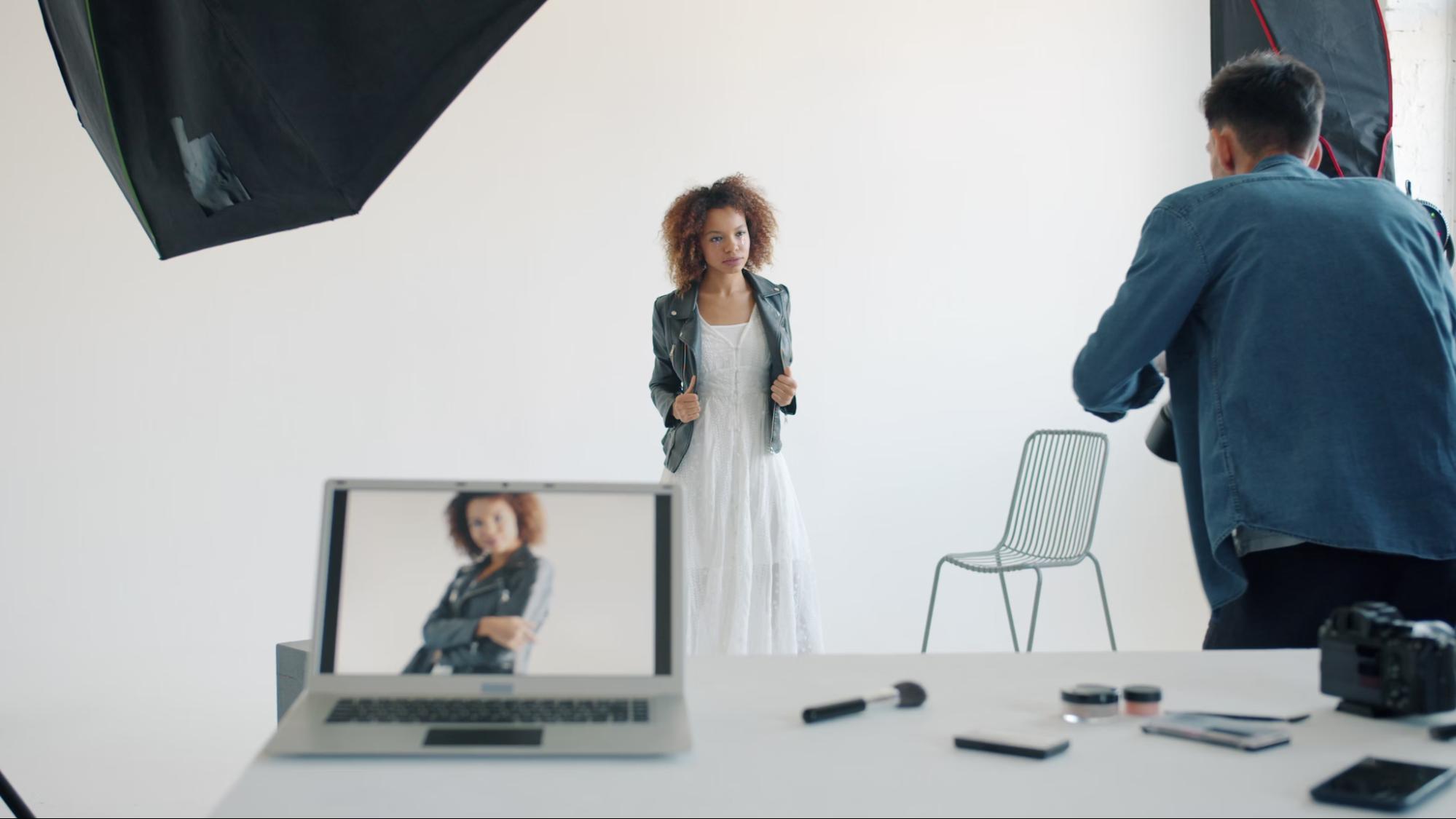18 Fashion Marketing Trends for 2025: A Brand Roadmap

Key Takeaways
- Personalization Drives Loyalty: Fashion shoppers now expect tailored experiences. Brands using AI to recommend products, personalize messaging, and offer real-time chat support are seeing stronger engagement and conversions.
- Inclusivity and Ethics Build Trust: Campaigns that highlight diversity and transparency resonate deeply. Showing real people of all sizes and backgrounds, plus clear sourcing and fair labor practices, helps brands earn loyalty from conscious consumers.
- Sustainability Is a Core Expectation: Eco-friendly packaging, recycled materials, and circular fashion models are no longer optional. Customers favor brands that actively communicate their sustainability goals and ethical production methods.
- Tech Is Redefining the Fashion Experience: AR try-ons, AI trend forecasting, and blockchain tracking are transforming how people shop. These tools make online shopping more interactive and trustworthy while improving inventory accuracy.
- Creators and Communities Drive Conversions: Partnering with creators and encouraging user-generated content builds authenticity. Niche influencers and engaged micro-communities often outperform big names in driving real sales and brand credibility.
- Video and Shoppertainment Dominate Discovery: Live shopping, interactive videos, and creator-led storytelling are the future of fashion marketing. They let customers shop directly within the content, making discovery and purchase one seamless experience.
How Fashion Marketing Has Evolved
The fashion industry is now a $775 billion global market, expected to grow to $1.2 trillion by the end of 2025. The evolving digital transformation and consumer behavior have created many new consumer expectations that encourage brands to enhance their marketing and customer interaction.
Customers now expect personalized recommendations, 24/7 support, and seamless shopping experiences across every channel - from websites to WhatsApp. The emergence of AI and the rise of UGC and creator content across the virtual space are encouraging businesses to adopt AI-powered solutions and collaborate with creators to expand their reach and brand credibility.
18 Fashion Marketing Trends for 2025
Exploring the latest fashion marketing trends helps brands evolve and stay relevant in a fast-changing landscape. These 18 trends highlight where the industry is heading in 2025 and beyond, guiding brands to strengthen their market presence, connect with audiences more meaningfully, and build a distinctive public image that drives long-term growth.
Personalization and Inclusive Marketing Trends
Personalizing shopping experiences and brand messages enables brand owners to connect more deeply with their consumer base. Hyper-personalized shopping experiences, inclusive campaigns, and zero-party data are the three most popular fashion marketing trends in 2025:
1. Hyper-Personalized Shopping Experiences
Much like Netflix, fashion brands are using data from landing pages, content interactions, and purchase history to deliver tailored product recommendations and experiences. Machine learning, AI chatbots, data-driven product suggestions, and many personalization strategies are used to connect and convert customers.
2. Inclusive Campaigns for Diverse Body Types & Identities
Adding inclusivity to marketing campaigns demonstrates a brand's commitment to diversity and identity. Consumers now look for fashion brands that represent diverse ethnicities, genders, and body types, using models and products that meet the specific needs of the diverse population. Many clothing brands often showcase plus-size models and people of color on their covers.
3. Zero-Party Data Collection for Better Insights
Zero-party data refers to information that consumers consent to sharing with a brand to improve their experience. Brands often do surveys, polls, quizzes, or questionnaires to gather customer insights, which are used to personalize campaigns, brand messages, shopping experiences, and product lines.
Sustainability, Ethics & Circular Fashion Trends
Sustainability and ethics are now influencing the choices of many. Even small lifestyle choices, like switching to reusable straws, illustrate how ethical reasoning drives today’s consumers to compare and choose more sustainable options.
4. Marketing the 7 Rs of Circular Fashion
The 7 Rs of circular fashion is one of the emerging fashion marketing trends that encourages brands to use these seven sustainable practices:
- Refuse
- Reduce
- Reuse
- Repair
- Recycle
- Rethink
- Redistribute
Today’s consumers are more conscious of the environment and resonate with the “less is more” philosophy, which influences them to buy products that are reusable or made with a less-waste approach.
Many brands are seen tailoring their marketing messages to connect with consumers who focus on ethical practices and sustainability, such as reusable packaging or recycled goods.
5. Transparent Ethical Supply Chains
Consumers now expect brands to be transparent about how they source their materials and produce the final products. Consumers tend to boycott or “cancel” brands that resort to unethical means, such as child labor and unfair wages.
6. Eco-Messaging That Resonates With Conscious Consumers
Many brands often get explicitly transparent about their sustainable policies to gain the trust of their conscious consumers. Businesses might talk about their actions to reduce carbon footprints, their policies to use sustainable materials, and their ethical production practices to attract more loyal customers.
Technology & Digital Transformation Trends in Fashion Marketing
Digital transformation and AI innovation have drastically changed shopping behavior in recent years. Customers expect a more fluid shopping experience, whether it's from a website or social platforms.
7. AI-Powered Demand Forecasting and Fashion Marketing Trend Analysis
Brands can use AI-powered trend analysis and demand forecasting to predict future demand without leaning on traditional forecasting methods. AI can be used to analyze trends and market changes to better respond to consumer demands. E-commerce giants like Amazon have already implemented deep learning algorithms to optimize their inventory, reducing waste and maximizing availability.
8. Augmented Reality (AR) Try-Ons and Virtual Fitting Rooms
Augmented reality (AR) and AI enable virtual try-ons and fitting rooms, giving customers an in-store experience online - trying outfits and accessories in a realistic, immersive environment. This trend is expected to become the norm, where customers can check the size, style, and fit online. Brands can leverage such technology to include AR try-ons and virtual fitting rooms, improving customer experience significantly.
9. Blockchain for Supply Chain Transparency
Blockchain technology can be used to streamline supply chain workflows. This helps businesses become more transparent by allowing third-party auditors to examine the blockchain and verify the supply chain’s authenticity, making it appear more trusted to users.
Social Commerce, Shoppertainment & New Content Formats
Facebook popularized social commerce through its pages and groups, paving the way for integrated shopping experiences on Instagram, TikTok, and beyond. Here’s how social commerce is evolving based on that:
10. Live Shopping and In-Stream Purchases on Social Platforms
Live shopping and in-stream purchases are popular fashion marketing trends that offer the most visibility and interaction. People often expect to see a product in live videos where they can ask questions, get answers, and view it in real time, without filters or tampering. Video selling is becoming quite popular on social platforms, where limited-edition or clothing products are being sold.
11. Long-Form Video and Creator-Driven Storytelling
Visual storytelling is one of the most powerful resources for brands. It helps showcase products and emotionally resonate with customers, especially when a content creator does it.
12. Micro-Communities and Niche Hashtag Marketing
Micro-communities are small groups of people on social media who share interests. These groups are often seen within Discord and Reddit. Micro-communities help brands refine their products and messaging by collecting real insights from specific groups of people who share interests and challenges.
On the other hand, many brands use a niche hashtag strategy on social media platforms like X and Instagram. Posting content with a targeted hashtag helps brands increase visibility, drive viral marketing, and build authority.
Data-Driven Marketing & Omnichannel Integration
Brands are using omnichannel strategies to bridge the gap between online and offline sales, where data plays a crucial role in enhancing shopping experiences.
13. Unified Metrics Across Web, App & Store
It’s important to track performance and gain user data from all channels, including the app, website, and store. This allows brands to keep track of their inventory, optimize sales channels, and marketing messages across all platforms.
14. Hyper-Segmentation and Predictive Customer Journeys
Hyper-segmentation is a powerful fashion marketing trend that helps a brand stand out by focusing on specific customer segments, such as demographic, geographic, psychographic, and behavioral data. It becomes much easier to uncover customer data when you work with one or a few customer segments and design marketing campaigns and predictive customer journeys specific to their unique needs.
15. Bridging Online, Offline & Mobile Experiences
Today’s customers expect reputable brands to deliver a unified and seamless shopping experience across online, offline, and mobile channels. Brands must integrate every touchpoint - from websites and stores to mobile apps and social commerce - into one consistent journey. When customers can find and shop effortlessly across all platforms, satisfaction and loyalty naturally rise.
Experience & Community-Based Marketing Trends
Trust is a key element in modern shopping, as today’s consumers rely heavily on social proof and recommendations before making a purchase, especially online.
16. Creator Partnerships as Strategic Brand Assets
Creator partnerships allow a brand to increase reach by leveraging creators’ popularity and loyal follower engagement. Creators typically promote a brand with their authentic voice and present products through storytelling. Partnering with creators is a potent fashion marketing trend that helps a brand build credibility and drive sales.
17. User-Generated Content (UGC) & Micro-Influencer Campaigns
Brands should prioritize user-generated content (UGC) and micro-influencer collaborations to build authenticity and engagement. For example, brands like GoPro and Doritos have showcased how innovative UGC campaigns can build credibility and strengthen community ties. Such content builds trust and social proof more effectively than traditional ads. Instead of focusing solely on high-follower influencers, brands can partner with emerging creators who have highly engaged niche audiences that genuinely align with their values and products.
18. Experiential Events and Immersive Brand Activations
Experiential events and immersive brand activations have become powerful marketing trends, especially within the apparel industry. By hosting interactive, multisensory experiences, like pop-up stores, in-store activations, or creative workshops, brands can engage customers directly with their products. These real-world interactions help turn passive shoppers into active brand advocates and create memorable emotional connections.
Fashion Marketing Performance Benchmarks to Watch in 2025
It’s crucial to monitor and evaluate fashion marketing performance to identify the most effective channels and strategies. This table breaks down the key fashion marketing benchmarks to watch for:
Strategic Tips to Elevate Your Fashion Brand in 2025
To succeed in 2025, brands need a tailored strategy that aligns with evolving fashion marketing trends. Building a personalized roadmap ensures that every campaign feels relevant, engaging, and true to your brand’s identity. Below are key strategies to help elevate your fashion brand and stay ahead in a dynamic, competitive marketplace:
- Transform Static Content into Interactive Experiences: Brands should focus on turning static visuals into dynamic, immersive experiences that capture attention instantly. With Tolstoy AI Studio, brands can automatically transform product images into short, shoppable videos, bringing catalogs to life without manual editing. This makes it easier to showcase fabric textures, product details, or styling ideas in motion. Combined with AI virtual try-ons, GIFs, and interactive product videos, AI-powered visuals create a richer, more engaging shopping journey that keeps customers exploring longer.
- Personalize Every Customer Journey: It’s important to collect customer data ethically, with full consent, and use it to personalize every touchpoint of the shopping journey. Tolstoy AI Shopper helps brands deliver one-to-one experiences through AI-powered virtual try-on, real-time product recommendations, conversational AI shopping assistance, and accurate sizing recommendations. It learns from customer preferences and behavior to curate personalized selections, provide instant support, and streamline decision-making, turning browsers into loyal buyers while maintaining transparency and trust.
- Blend Storytelling with Shoppertainment: Brands should opt for content that leverages strong storytelling and entertainment. Formats like creator-led fashion shows or interactive product videos capture attention and build emotional connection while keeping audiences entertained.
- Leverage Creator-Led Campaigns for Authenticity: Collaborate with creators who embody your brand values and engage niche communities. Their storytelling and relatability help drive authentic engagement and long-term trust.
- Integrate Interactive Video Analytics into Your Marketing Stack: Use interactive video analytics to understand how viewers engage with your content, what they click, skip, or replay. Apply those insights to refine storytelling, improve conversions, and optimize future campaigns.
- Align Sustainability Messaging with Transparency Tools: Including sustainability and ethical messaging in your marketing helps build trust among conscious customers and gain a competitive edge.
- Reimagine Post-Purchase Engagement Through Video: A great way to convert first-time buyers into loyal customers with how-to videos, product care tutorials, or styling tips, etc.
How Tolstoy Elevates Fashion Marketing Trends Through Interactive Video
Tolstoy is an AI commerce platform that helps eCommerce brands create interactive, shoppable video experiences that convert viewers into buyers. Tolstoy brings three AI-powered solutions together in one seamless platform, empowering fashion brands to engage, convert, and analyze in real time:
- Interactive Video & Shoppable Storytelling at Scale
Transforms social and campaign videos into fully shoppable experiences, allowing customers to browse and purchase products directly from the video. - Real-Time Engagement Metrics for Creator and Community Content
Track real-time performance across creator and community content, including clicks, completion rates, and conversions. These insights help brands identify top-performing creators and formats that drive measurable sales impact. - Seamless Integration with Social & Commerce Workflows
Tolstoy integrates effortlessly with your eCommerce ecosystem, including Shopify, Klaviyo, and Tapcart, allowing interactive videos to connect directly to checkout, campaigns, and CRM workflows for a smoother customer journey.
Conclusion
Fashion marketing trends offer a clear path for brands to refine their strategies through insights into consumer behavior, digital transformation, and AI innovation. While emerging technologies are reshaping the landscape, influencer marketing and social media promotions remain essential pillars of growth. To succeed, brands must embrace new trends while tracking performance metrics that measure real impact and guide smarter, data-driven marketing decisions.
FAQs
True inclusivity goes beyond representation in visuals. Authentic inclusive marketing ensures that a brand’s messaging, products, and experiences reflect the real needs of people across different genders, sizes, and ethnicities. It’s about embedding diversity into the brand’s DNA, and not just showcasing it in campaigns.
Small or emerging fashion brands can adopt high-impact trends in the following way:
- Use tools like Instagram filters or apps like Tolstoy to integrate AR try-ons effortlessly and at a low cost.
- Use the live streaming features of popular platforms like Facebook, TikTok, and Instagram, where most of your customers are present.
Tolstoy lets you create shoppable videos:
- You can upload or integrate interactive, creator-led videos from social media to your website.
- These videos include built-in shopping features, allowing customers to explore products and complete purchases without leaving the experience.
Tolstoy offers the easiest way to generate a campaign-ready visual in seconds:
- Sync all catalog and brand assets to Tolstoy.
- Tolstoy AI automatically reviews and selects the best sources and prompts.
- It bulk-creates polished, on-brand content in seconds, and lets you easily approve, tweak, or regenerate assets.
- Finalized content gets distributed across PDPs, PLPs, email, and social media.
The AI commerce era is here!
Ready to accelerate
your brand?
Table of contents
More stories

3 Best Shopify Themes With Video Headers
Video headers are a great way to capture the attention of potential customers. Check out three Shopify themes with video headers to choose from for your store.



